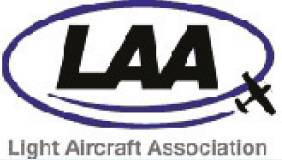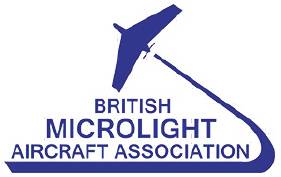Society News
RAeS LIGHT AIRCRAFT COMPETITION
RAeS International Light Aircraft Competition 2021-2022
Welcome to the RAeS International Light Aircraft Design Competition 2021-22. This year’s competition is supported by the Light Aircraft Association and the British Microlight Aircraft Association which supervise the building and operation of most light aircraft in the UK.
Mission
Your aim is to design a piloted electric aircraft that will deliver a passenger or essential supplies in equatorial countries from short soil airstrips. The objective is to provide the best possible combination of productivity and utility.
The design must conform to the 600kg certification classes now popular in Europe (as microlights) and the USA (as Light Sport Aircraft). It shall operate under daytime Visual Flight Rules.
Recharging shall be via solar farms, batteries and chargers at each airstrip.

Eligibility and team structure
The competition is open to all with an interest in aircraft design. Entries from all countries and types of organisation (including individuals) are encouraged. You will need some aircraft design knowledge and the ability to perform basic engineering and aerodynamic calculations but you do not need to be a professional aerospace engineer.
Team size is left to the discretion of the entrant but all team members and their affiliation must be listed in the entry form with the final submission. Entrants are at liberty to form a consortium with other interested parties where specific skills and knowledge are required to fulfil the design exercise.
Judging of competition entries
The entries will be judged by a team of professional aeronautical engineers from the RAeS, the LAA and the BMAA. The winners will be announced at the RAeS GA Group’s Light Aircraft Design Conference which is planned for November 2022.
The winning design will be the one that scores the highest number of points. Points will be awarded with equal weighting (ie 1/3 each) based upon:
- the product of payload (kg) x range (km) x average cruise speed (km/hr);
- the quality and completeness of the design report; and
- the innovation, ruggedness, practicality and maintainability of the design.
Range and average speed are measured from ‘brakes-off’ at the start of the take-off to ‘brakes on’ at the end of the landing (both of which may be on any area or surface free of obstacles). The payload shall be of a specified density (see Design constraints).
 Design constraints
Design constraints
The design must be compliant with the following constraints:
- Designed broadly to BCAR Section S (see references below) but with the following changes:
- 600kg maximum total weight authorised (MTWA) › Vso 83.3km/h – 45kt › Fixed undercarriage
- The design must cater for the mass of any pilot and passenger in the range of 50kg to 100kg.
- Designs will be practical, rugged and maintainable.
- The aircraft shall be a fixed-wing configuration, with a maximum wing span of 11.0m.
- The aircraft shall utilise an electric powertrain using only batteries for energy storage.
- Up to four motors and up to four propellers may be used.
- Propellers must be fixed pitch.
- No thrust vectoring is permitted.
- The design shall be fault-tolerant: able to fly safely having suffered a failure of a single motor, battery or propeller.
- The aircraft shall have a minimum wheel size (all wheels) of 6.00 x 6” and use at least 6.00 x 6 8 ply tyres.
- The aircraft shall have either hydraulic disc brakes or braking electric motors on main wheels.
- All moving aerodynamic surfaces must be mechanically actuated.
- Climb rate at 1,000ft and ISA + 20°C must exceed 2.5m/s using peak power.
- Artificial stability systems may not be used to enhance an otherwise unstable aircraft.
- An autopilot may be used to enable the aircraft to maintain heading, altitude and speed. This is useful within X-Plane when performing the mission.
For the purposes of design and performance calculations, the following must be used:
- Payload must have a density of 160kg/m3
- Batteries may only be used between 100% and 20% energy levels, to allow a reserve. You may assume that a 100% discharge rate is available throughout this range.
To ensure a consistent approach and permit fair judging, teams are to assume the following for the propulsion system:
- Electric motors (including controller) shall have a power density of no greater than 7kW/kg continuous (for cruise and descent) and 10kW/kg peak (for a maximum of 5 minutes).
- Batteries shall have a specific energy of 300Wh/kg at the cell level and a value of 200Wh/kg for the cells integrated into packs, including monitoring, control and cooling.
 Competition entry deliverables
Competition entry deliverables
To fulfil the competition requirements, entrants need to submit four key items:
- An entry form with your details and those of your team. This can be obtained upon request from the RAeS at generalaviation@aerosociety.com.
- The flight simulation model of the final aircraft design.
- A Final Design Report.
- At least one rendered image of your design.
More details on these are contained in what follows.
Simulation
The aircraft model of your design to be submitted shall be developed using the current version of X-Plane. The simulator version used for your final submission should be that available on full release on 31 May 2022.
The simulation model will be used to provide a definition of your design, to enable the judges to assess the aircraft’s handling and to provide evidence of the performance (especially range and speed) of the design.
The simulation software calculates the dynamic behaviour of your aircraft in real time from the basic information that you provide to it. However, this is, of course, dependent upon the 2D aerofoil data, masses, body profile drag and other values that you input to that software. You must provide evidence and reasoning to support the data that you use in your simulator model in your Final Design Report.
The competition performance demonstration flights must be conducted at ISA + 20°C and MTWA with the take-off and landing to be performed at –0ft < sea-level < +100ft. The cruise height must be 3,000ft ±100ft. The take-off is to be simulated from a soil runway and hence a rolling resistance coefficient of 0.1 must be used.
To display the remaining watt-hours for each battery, use ‘Data Output’ to ‘Show in Cockpit’ 124 – Electrical and Solar systems’ (there is currently no available cockpit instrument for battery energy in X-Plane). Your X-Plane files must be in the directory X-Plane 11/Aircraft/name-of-your project folder.
This folder must contain the following data in X-Plane format:
- A flight model of your design in the form of a.acf file. This includes data defining the motors, batteries and transmissions, including transmission losses and battery characteristics;
- An aerofoils folder containing your aerofoils as.afl files;
- Folders containing cockpit and object files. (You are encouraged to include graphic files (.png) and/or 3D object files (.obj) to improve the cosmetic appearance of your cockpit and external views.) and;
- The replay file (.rep) demonstrating your aircraft’s performance for the mission.
Key dates
From June 2021 register your interest with generalaviation@aerosociety.com. The email subject line should be ‘Design Competition 2021/2022’. You will be sent an entry form to complete and return.
Your entry must be submitted by midnight London time on 31 August 2022 to: generalaviation@aerosociety.com
For further information visit: www.aerosociety.com/aircraftdesigncomp


